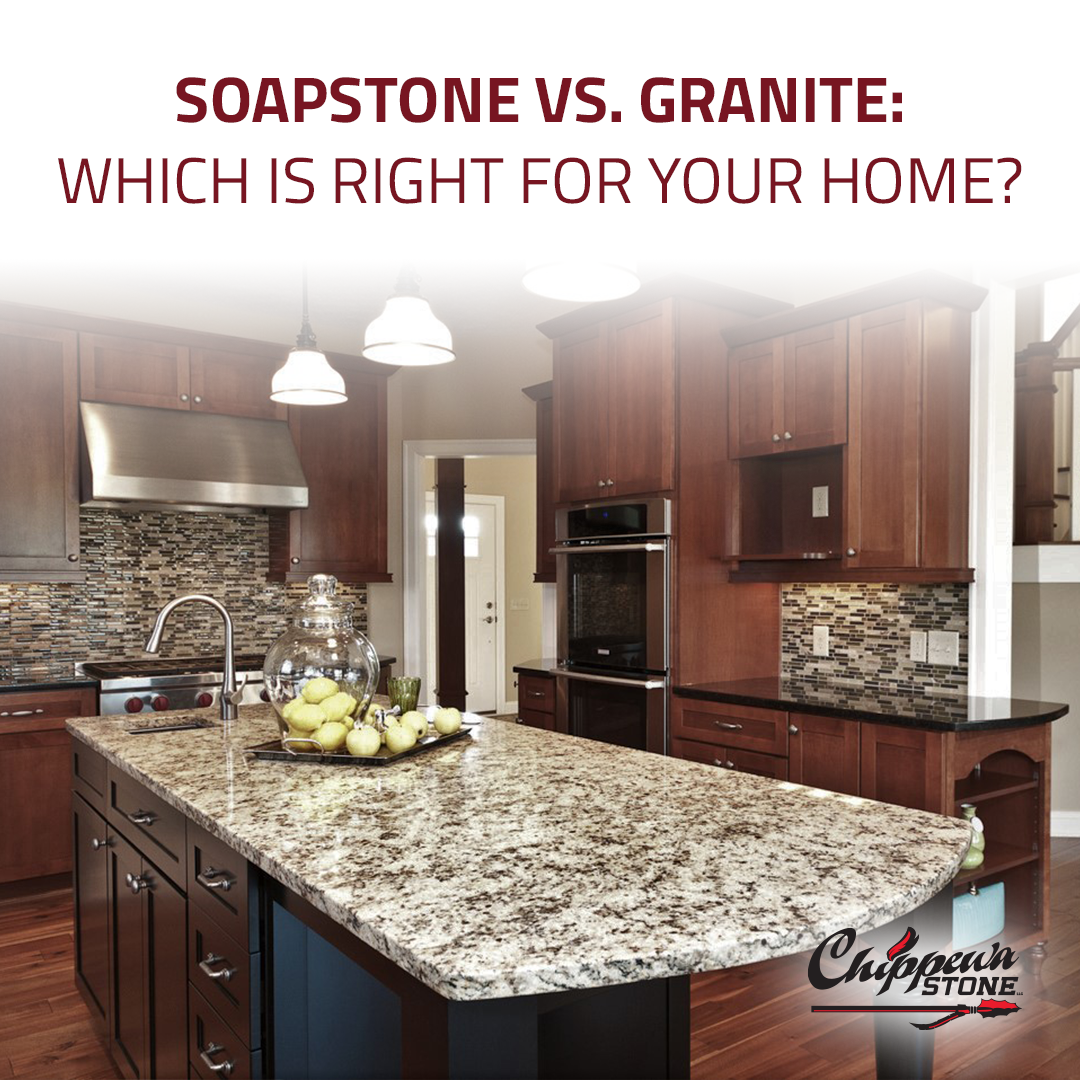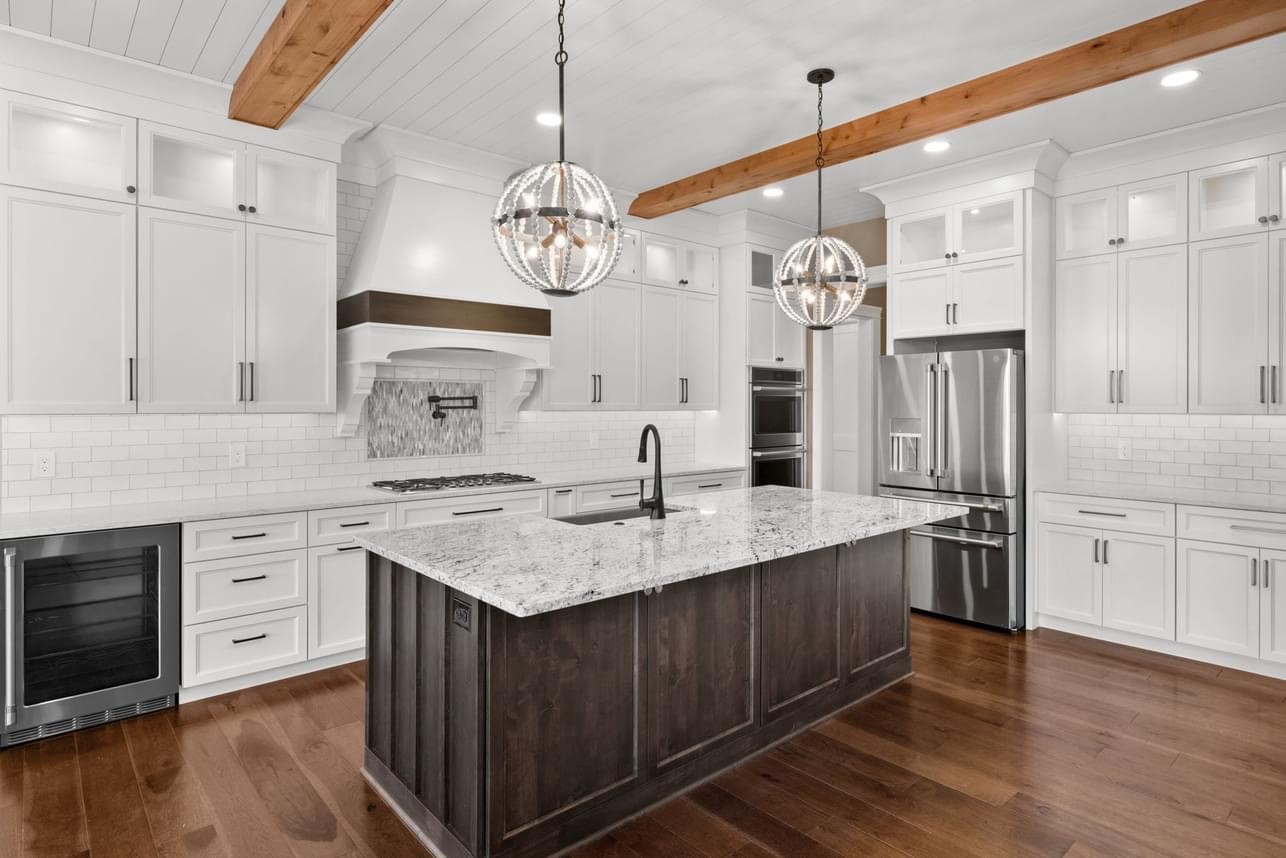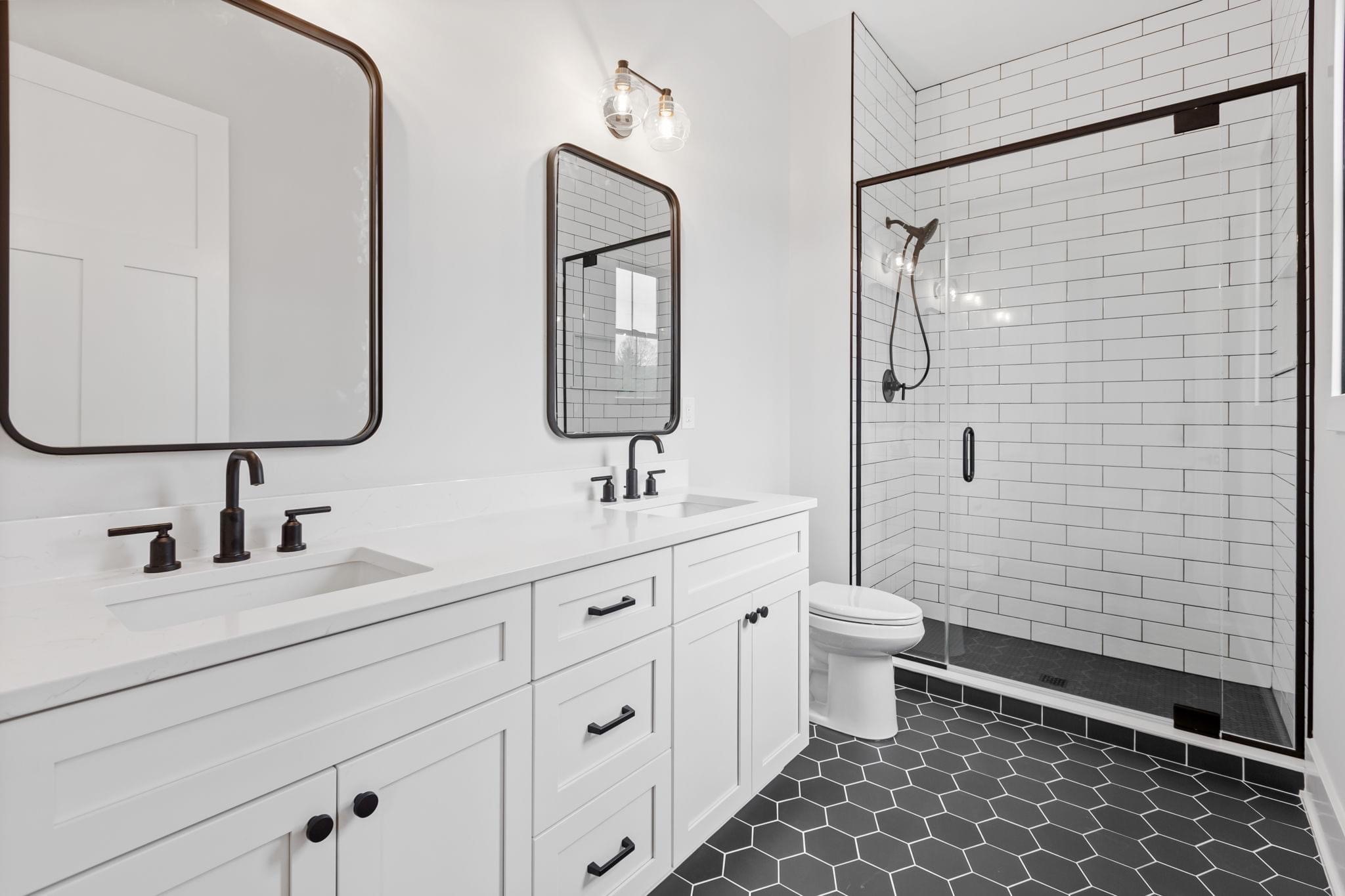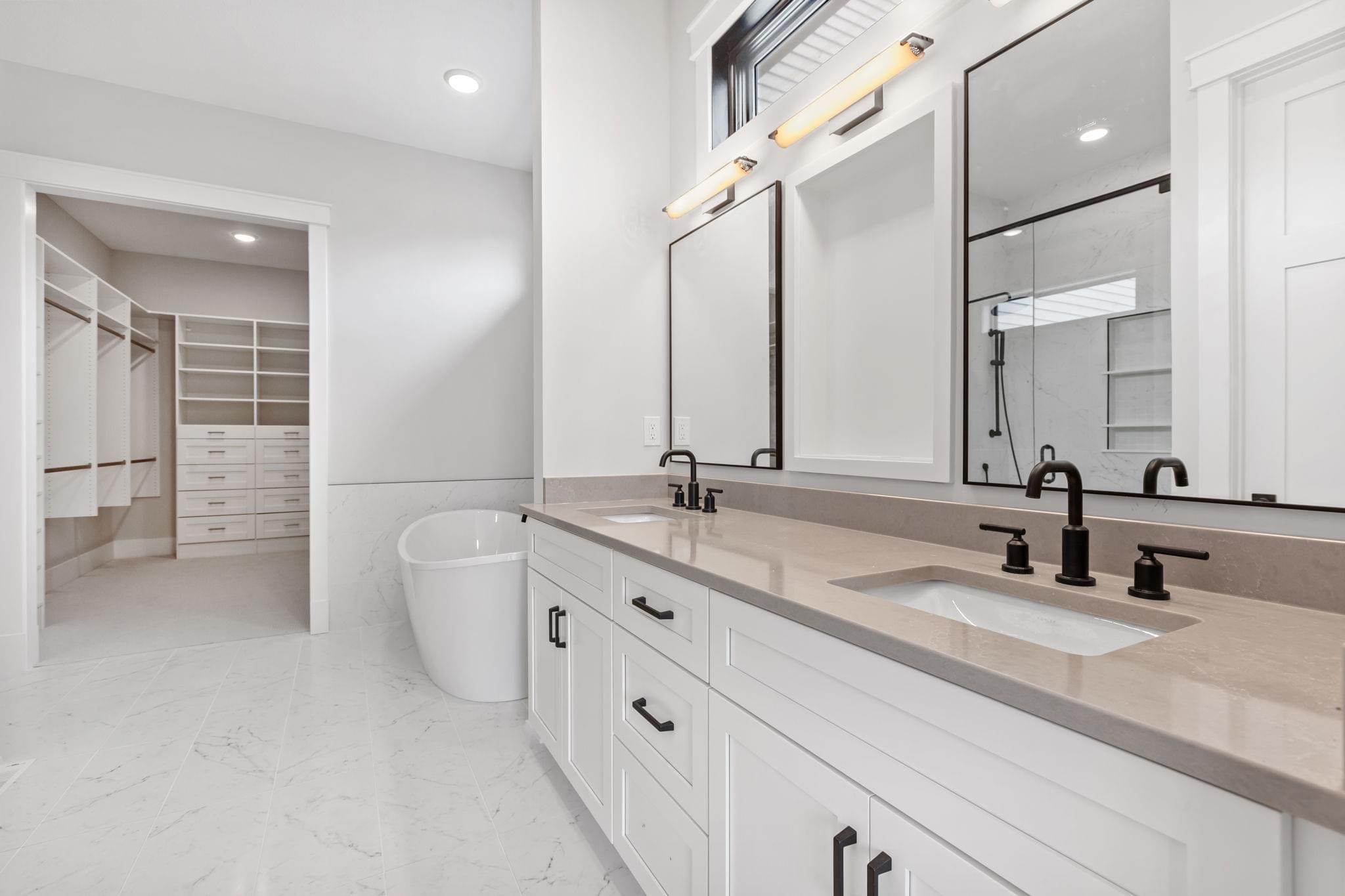Choosing the perfect stone for your home can be overwhelming, especially with so many beautiful options to consider. Two popular choices, soapstone and granite, offer unique benefits, but understanding their differences is crucial to making the best decision for your home. In this comprehensive guide, we’ll compare soapstone and granite in terms of appearance, durability, maintenance, and cost, helping you decide which stone is right for your space.
What is Soapstone?
Soapstone is a natural stone composed primarily of talc, giving it a soft, smooth texture. Its high talc content makes it softer than other stones like granite or quartz, but it is still dense and durable. Soapstone has been used for centuries in homes, particularly in kitchens and fireplaces, due to its unique look and ability to resist heat.
Soapstone is typically found in shades of gray with subtle veining, though its color can darken over time, developing a rich, antique look. Its soft texture and matte finish give it a warm, inviting feel that’s perfect for rustic or traditional-style homes.
By understanding the properties of marble, you’ll be better equipped to care for it and keep it looking pristine.
What is Granite?
Granite is an igneous rock formed from volcanic activity, making it one of the hardest and most durable natural stones available. It is composed mainly of quartz, feldspar, and mica, giving it a speckled appearance with varying patterns and colors. Granite is highly sought after for countertops and other high-traffic areas in the home due to its strength and resistance to scratching and heat.
Granite is available in a wide range of colors, from light neutrals to bold, dramatic hues, making it a versatile choice for any design aesthetic. Its polished finish and unique veining or speckling patterns create a stunning, high-end look.
Appearance: Soapstone vs. Granite
One of the primary considerations when choosing between soapstone and granite is their appearance. Both stones offer natural beauty but with very different aesthetics.
Soapstone’s Appearance:
- Soft and Subtle: Soapstone is known for its smooth, matte surface and soft, muted colors. Most soapstone is available in shades of gray, though it can darken to a deep charcoal or even greenish-gray over time.
- Natural Patina: Over time, soapstone develops a natural patina, giving it an antique or weathered look. Some homeowners love this aged appearance, while others prefer a stone that remains more consistent in appearance.
- Minimal Veining: Soapstone typically has subtle veining patterns, which contribute to its understated, natural beauty.
Granite’s Appearance:
- Bold and Dramatic: Granite offers a wide variety of colors and patterns, ranging from light beige or white to deep black, with everything in between. Its polished surface and bold patterns make it a statement piece in any room.
- Distinct Veining and Speckling: Granite is known for its dramatic veining and speckling, which can range from subtle to bold, depending on the slab. Each piece of granite is unique, meaning no two countertops will look exactly the same.
- High Gloss: Most granite is finished with a high-gloss polish, adding a sleek, modern feel to your home.
If you prefer a soft, understated look with a natural patina, soapstone may be the right choice. If you’re looking for bold, dramatic patterns and a glossy finish, granite might better suit your style.
Durability and Hardness
Durability is a key factor when choosing any stone for your home, especially in high-traffic areas like kitchens and bathrooms. Soapstone and granite are both durable, but they differ in terms of hardness and resistance to damage.
Soapstone’s Durability:
- Soft but Dense: While soapstone is softer than granite, it is dense and resistant to cracking or breaking. Its softness makes it more prone to scratches and dings, but these imperfections can often be sanded out with minimal effort.
- Heat-Resistant: One of soapstone’s best features is its resistance to heat. You can place hot pots and pans directly on soapstone countertops without worrying about damage or discoloration.
- Non-Porous: Soapstone is naturally non-porous, meaning it doesn’t absorb liquids or stain easily. This makes it an excellent choice for kitchens and bathrooms, as it won’t be damaged by spills or water.
Granite’s Durability:
- Extremely Hard: Granite is one of the hardest natural stones, making it highly resistant to scratches, chips, and cracks. It can handle heavy use in busy kitchens or other high-traffic areas without showing signs of wear.
- Heat-Resistant: Like soapstone, granite is heat-resistant, but it’s still recommended to use trivets or hot pads to avoid potential thermal shock, which can cause cracking in rare cases.
- Porous: Granite is porous, which means it can absorb liquids and potentially stain if not properly sealed. To protect granite from stains, it’s important to seal it regularly.
If you’re looking for a durable stone that’s heat-resistant and non-porous, soapstone may be the better option, especially if you don’t mind its softer surface. If you need a harder, more scratch-resistant stone, granite’s durability will serve you well, though you’ll need to keep up with sealing.
Maintenance and Care: Soapstone vs. Granite
Maintaining your stone surfaces is crucial for preserving their beauty and longevity. While both soapstone and granite require regular care, the maintenance routines differ.
Soapstone Maintenance:
- Oiling for Patina: To achieve a more even patina, many homeowners apply mineral oil to soapstone surfaces. Oiling darkens the stone and enhances its natural veining. This process is optional but helps soapstone age gracefully. It should be done periodically, especially when the stone is new.
- Easy Scratch Repair: Soapstone is prone to scratches, but these can be easily sanded out using fine-grit sandpaper. After sanding, reapply mineral oil to blend the repair with the rest of the surface.
- No Sealing Required: Unlike granite, soapstone doesn’t need to be sealed because it is non-porous. This makes it relatively low maintenance compared to other stones.
Granite Maintenance:
- Sealing: Granite requires regular sealing to protect it from stains and water damage. How often you need to seal depends on the type of granite and how much use the surface gets, but typically, sealing should be done every 6-12 months.
- Cleaning: Use pH-neutral stone cleaners or mild soap and water to clean granite surfaces. Avoid harsh chemicals like bleach or acidic cleaners, which can degrade the sealant and damage the stone.
- Scratch and Chip Resistance: While granite is more resistant to scratches and chips, if damage does occur, it’s more challenging to repair than soapstone. You may need professional help to restore deep scratches or chips.
If you prefer a stone that doesn’t require sealing and is easy to maintain, soapstone’s minimal maintenance needs might be appealing. However, if you’re comfortable with occasional sealing and want a harder, more scratch-resistant surface, granite could be the better choice.
Cost Comparison
Cost is always a factor when choosing materials for your home, and both soapstone and granite fall within a similar price range, but with some variation depending on the quality, color, and rarity of the stone.
Soapstone Cost:
- Soapstone tends to be slightly more expensive than granite due to its relative rarity and the specialized skills required to fabricate it. However, the total cost can vary depending on the slab’s thickness and the installation complexity.
Granite Cost:
- Granite is widely available, and its cost can range from affordable to high-end, depending on the color, pattern, and origin of the stone. Basic granite options tend to be more affordable than soapstone, but rare or exotic varieties can be more expensive.
If budget is a significant factor, granite may offer more affordable options. However, if you’re willing to invest in a unique, non-porous stone with low maintenance needs, soapstone could be worth the extra cost.
Final Verdict: Soapstone vs. Granite
Ultimately, the choice between soapstone and granite comes down to your personal preferences, lifestyle, and design aesthetic.
- Choose Soapstone If: You love the soft, natural look of soapstone, don’t mind its developing patina, and prefer a stone that’s heat-resistant, non-porous, and low-maintenance.
- Choose Granite If: You want a harder, more durable stone with a glossy finish, bold patterns, and are willing to seal it regularly to protect against stains.
Both soapstone and granite are excellent choices for countertops and other surfaces in your home. By understanding their differences in appearance, durability, maintenance, and cost, you can choose the stone that best fits your needs and enhances the beauty of your home.
At Chippewa Stone, we offer a wide selection of both soapstone and granite, and our experts are here to help you make the perfect choice for your space. Contact or visit us today to explore your options and find the stone that’s right for your home.








